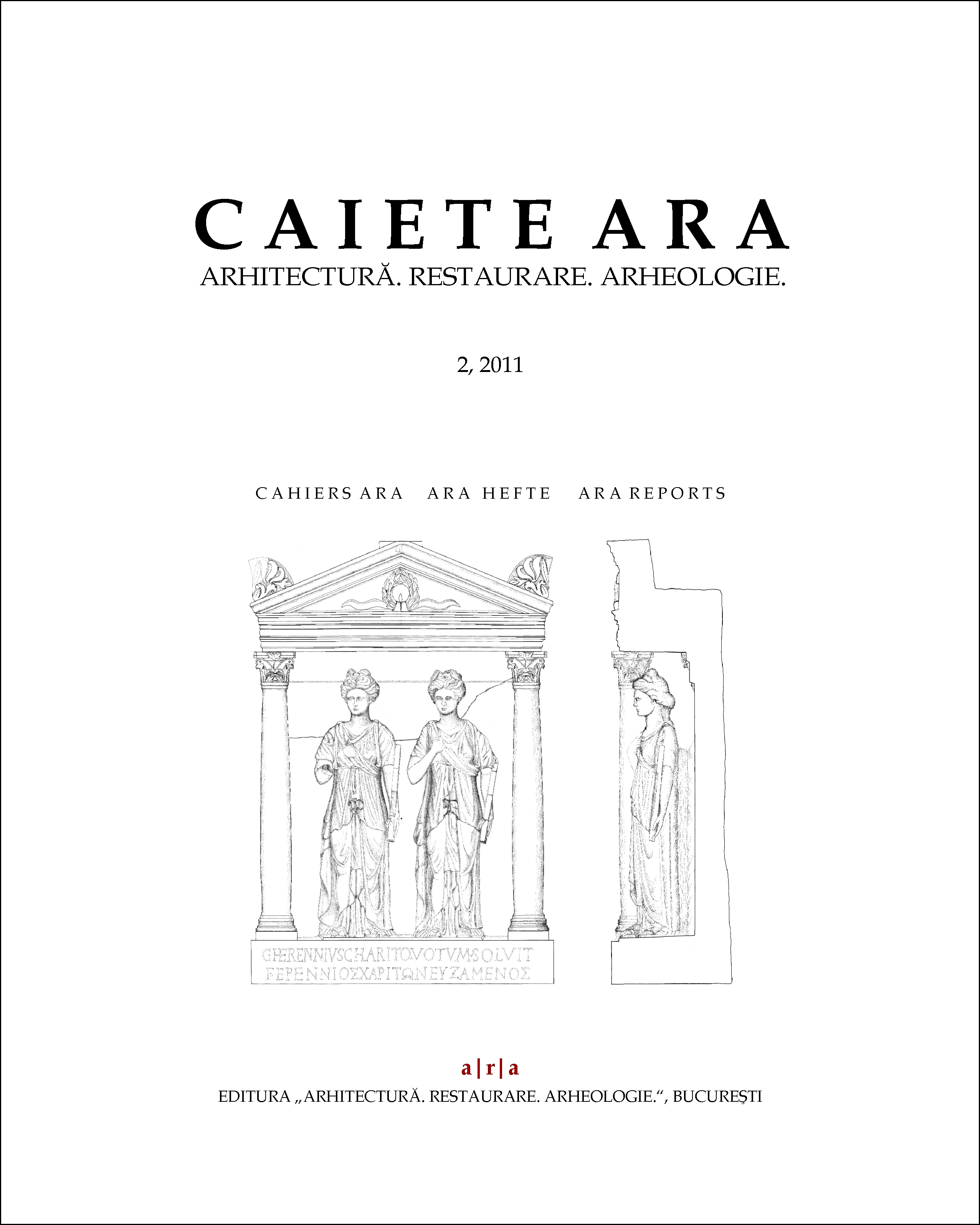The Bethlen castle in Boiu-Țopa
The Bethlen castle in Boiu-Țopa
Author(s): Letiția Cosnean NistorSubject(s): Architecture, 17th Century
Published by: Editura "Arhitectură. Restaurare. Arheologie"
Keywords: architecture of noble residences; ruins; spolia; Roman lithic fragments; architectural heritage; Transylvania;
Summary/Abstract: The Bethlen castle in Boiu-Ţopa, built at the beginning of the seventeenth century, extended and reconditioned during the eighteenth and nineteenth centuries by the Bethlen family (its Balasz-Blasius branch), is today in a state of ruin. Valuable fragments from the castle, important for the history of Transylvanian art and architecture (sculptured stone window-frames of Renaissance influence, a stone inscription with the Bethlen coat of arms, ornamental fragments of stucco and plaster) have disappeared gradually during the past twenty years because of improper use and dereliction.The castle ruinous state of preservation allowed us to identify a large number of finished limestone blocks, ashlar (ca. 45 items), with similar dimensions, embedded in the castle masonry. Following this remark, we present the hypothesis that these blocks represent Roman lithic fragments (spolia) from a camp located in the vicinity of the castle. The usage of Roman lithic fragments from Roman ruins for the edification of noble residences was a practice often met in the period of sixteenth-eighteenth century in Transylvania. Moreover, the analysis of spolia included in noble residences can contribute with precious information regarding the ‘migration’ of antiquities in Transylvania. The present paper shows aspects related to the history and architecture of this noble residence together with an inventory of visible limestone fragments. Seven items among the spolia are presented in more detail; they have sculpted profiles and finished sides, and are accessible for research.
Journal: Caiete ARA
- Issue Year: 2011
- Issue No: 2
- Page Range: 151-159
- Page Count: 9
- Language: English
- Content File-PDF

